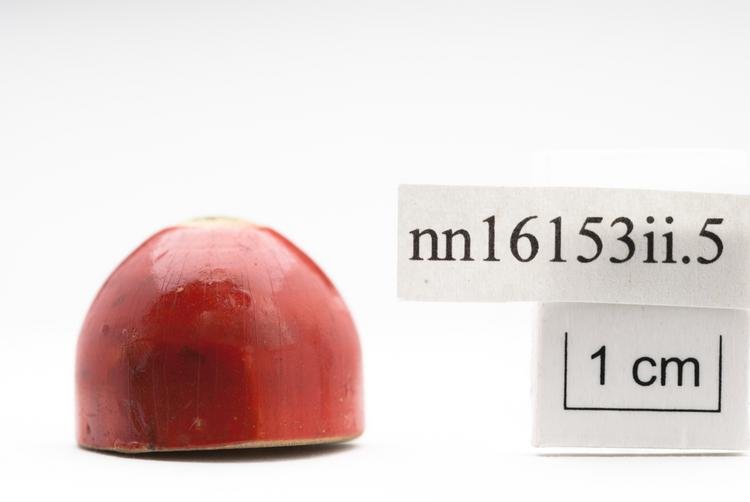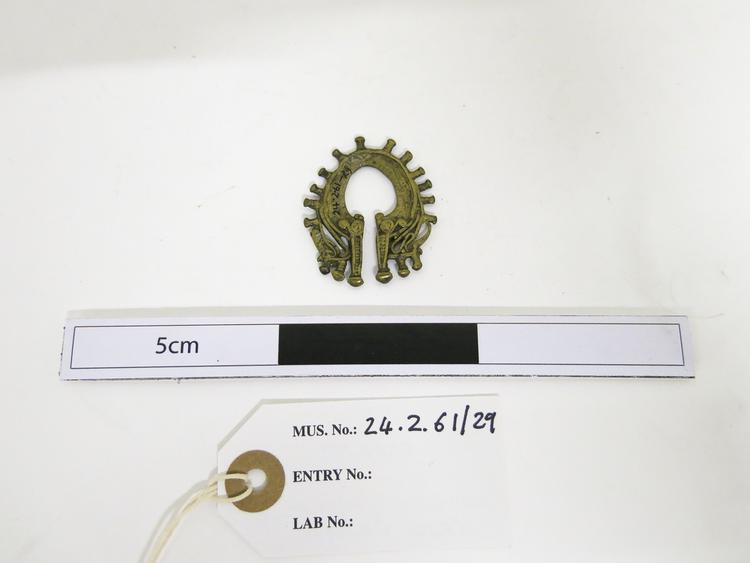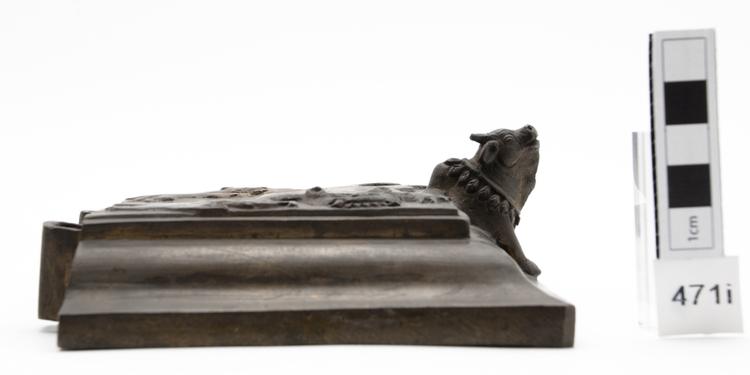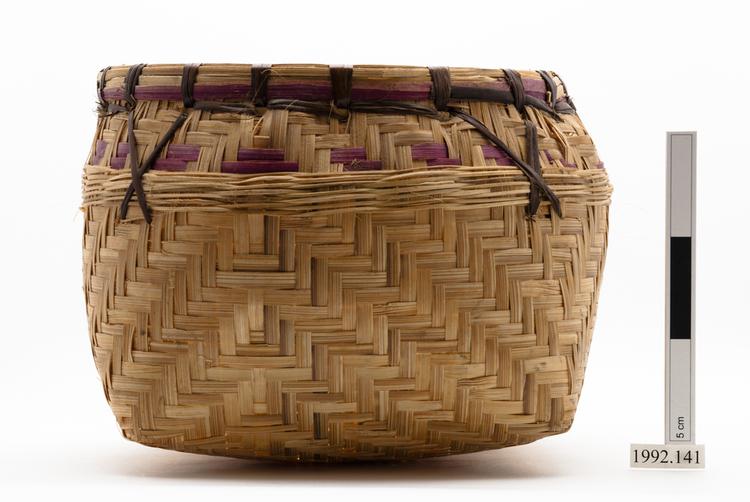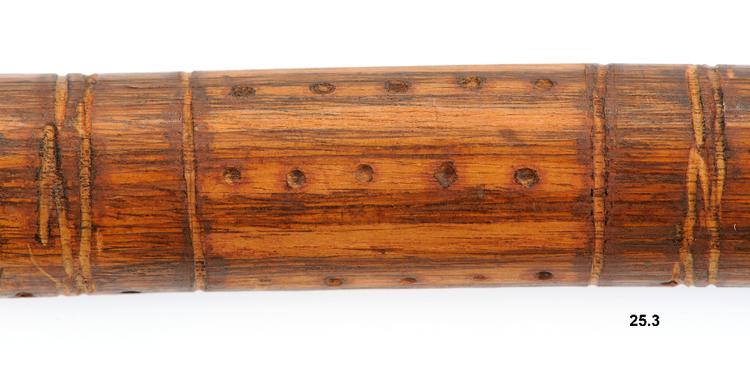
A message stick (milimili). The stick is divided into sections with incised lines. Each section contains incised lines or dots.
Message Sticks, Milimili, Ngarluma People, Northwestern Western Australia, Australia. ‘Message sticks’, as they are generally known, are fascinating Aboriginal artefacts. These cut, barked and decoratively carved sticks contain no message than can be ‘read’ like writing; instead, they were used more like medieval wax seals, or modern signatures. Used in many different parts of the Australian continent, and differently made in each Aboriginal culture, each man developed his own set of message stick marks, which became recognisable to his wide circle of friends, relatives and diplomatic contacts. When the man needed to send a messenger to one of these contacts, he would mark up a stick with his insignia, select a male relative to relay the message, and send him off with the message stick as evidence of the message being genuine. In certain circumstances, message sticks could also act as a kind of passport, showing that the traveller was under the owner’s protection, and ought to be given safe passage through his territories. Wood. Early 20th Century. Collected by Dr Emile Clement and sold to the Horniman Museum in 1925.



